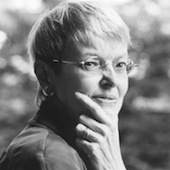How Long Will the Center Hold in Germany?

Elizabeth Pond
Elizabeth Pond is a Berlin-based journalist and the author of Beyond the Wall and The Rebirth of Europe.
Germany’s party system is on the cusp of something. The big question is whether that something might be erosion of the stable political center that the country has enjoyed over the past six decades.
The suspense goes well beyond the short-term issue of whether conservative chancellor Angela Merkel will now put together a governing coalition with the Social Democratic Party (SPD) or the Green Party. The long-term question is how long Germany’s two big “people’s parties,” the SPD and Merkel’s Christian Democratic Union—in tandem with its sister Christian Social Union in Bavaria—can still maintain consensus in the political center.
On the face of it, the potential decay of political consensus would seem like a bizarre worry, given Merkel’s huge victory in last week’s election and her astounding two-thirds public approval as she enters her third term as chancellor. This week the Washington Post‘s E. J. Dionne even posits the German polity as a cooperative model that a gridlocked Congress should emulate.
Yet, Germany’s center-right Frankfurter Allgemeine Zeitung is already warning about the risks in the post-Merkel era beginning in 2017 and fears that Berlin might then go the way of Vienna. Austria’s election last Sunday gave a narrowed margin to the incumbent “grand coalition” of the main conservative (24%) and Social Democratic (27%) parties but reinstated the radical right Freedom Party (21.4%) as the third largest political force and also admitted to parliament the rank newcomer New Austria Party (4.8%) of Austrian-Canadian billionaire Matthias Strolz.
The danger the newspaper sees for Berlin is not that a radical right fringe party might grow strong enough to join and radicalize a coalition government as the Freedom Party did in Austria in the 1980s. It is instead that the two big German parties might shrink to the 20th percentile in popular support as their Austrian counterparts have already done—and eventually face the Belgian or Italian dysfunction of splintered parties that makes it hard to form coherent democratic coalitions.
Already the conservatives have shrunk from their high of 50.2%—and their only absolute majority—in 1957 to 41.5% in last week’s election in Germany. The Social Democrats have sunk even lower, from their high of 45.8% in 1972 to last week’s 25.7%. Together with their on-and-off partners of the Free Democratic Party (FDP) and the Greens, they have gathered enough votes to keep the middle predictable and stable over the past half century. The very big conservative tent of Angela Merkel stretches from the Bavarian Christian Social Union on the right to her own progressive adoption of Social Democratic and Green issues on the center-left, and the conservatives have always co-opted and smothered the far right. The Social Democrats have performed the same service on the left.
Yet the chancellor’s domination of her conservative troops has depended in part on her skill at seeing off anyone who aspired to be her heir apparent. Nasty fights to succeed her when she steps down in four years could chip away at the unity she has enforced. And, if the SPD now enters a grand coalition with Merkel, as it did from 2005 to 2009, it will have to mute its distinctive voice and can expect the same loss of disillusioned supporters that it experienced in 2009.
More hints of potential fragmentation came in last week’s parliamentary election. The FDP was ejected from the Bundestag for the first time since 1949. The gentrified Greens won one less seat than the Left Party that was formed after German reunification in 1990 around a core of former East German elites. And, the brand new anti-euro splinter party, called Alternative for Germany, drew 4.8% away from the political center.
In the enduring pattern since World War II, the small FDP’s contribution to political stability has usually been to tip the scales to determine which of the two large parties could form a majority government. The Free Democrats could switch easily from the conservatives to the Social Democrats and back because of their own mixed platform stressing civil rights, entrepreneurial interests, and moderate nationalism. In this year’s election, however, they fell just short of the 5 percent minimum needed to win any seats at all in the Bundestag.
It will be hard for them to claw their way back to parliament and to their key role in deciding the ruling majority. Their lackluster leaders today no longer match the FDP’s former giants. They will lose the government subsidies granted to Bundestag parties. And, they now face robust competition from other small parties for floating votes.
As for the Green Party, after 30 years in the Bundestag it has evolved from its “fundamentalist” leftist beginning to become a pragmatic middle-class party. It already served a term in government in coalition with the Social Democrats after the 1998 election, and it could conceivably replace the FDP as the swing party, if it did not have to split the votes of the growing number of defectors from the people’s parties with the growing number of other small parties. The rival upstart Alternative for Germany, for example, has now made an impressive beginning, even if it fell short of the Bundestag minimum. It will surely meet the lower hurdle of 3% to enter the European Parliament in next spring’s elections and will use this as a base for poaching German voters from conservatives in 2017.
The long-term structural question, then, is a serious one. Just how long can Germany’s political center hold once Angela Merkel has left the chancellery?
Elizabeth Pond is a Berlin-based journalist and the author of Beyond the Wall: Germany’s Road to Unification (Brookings). This article appeared first at the World Policy Institute’s blog and has been reprinted with the permission of the author.








